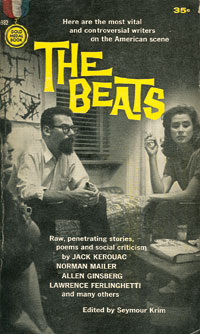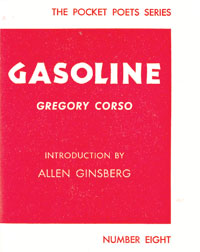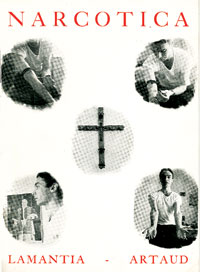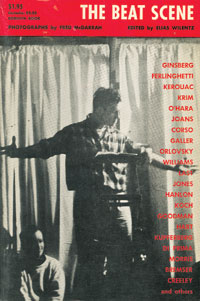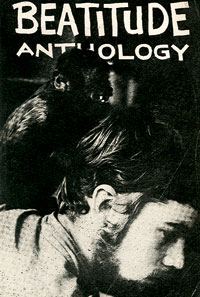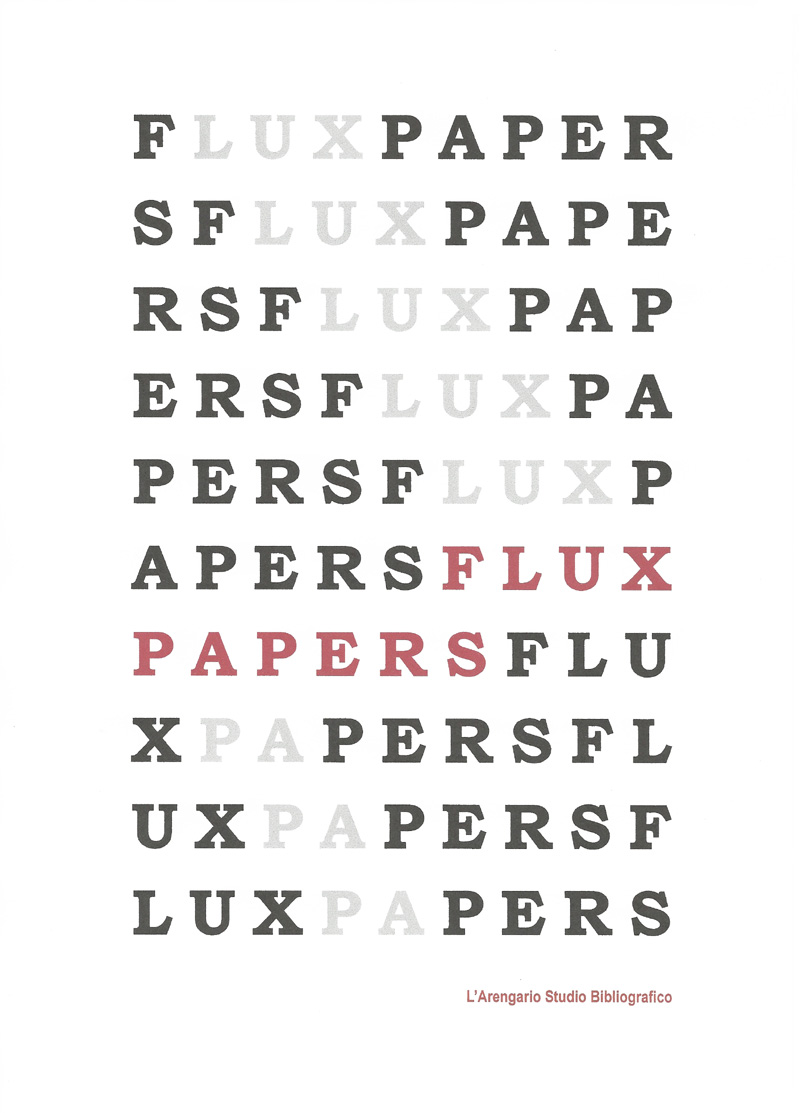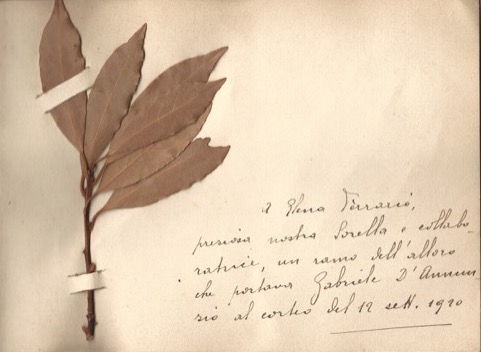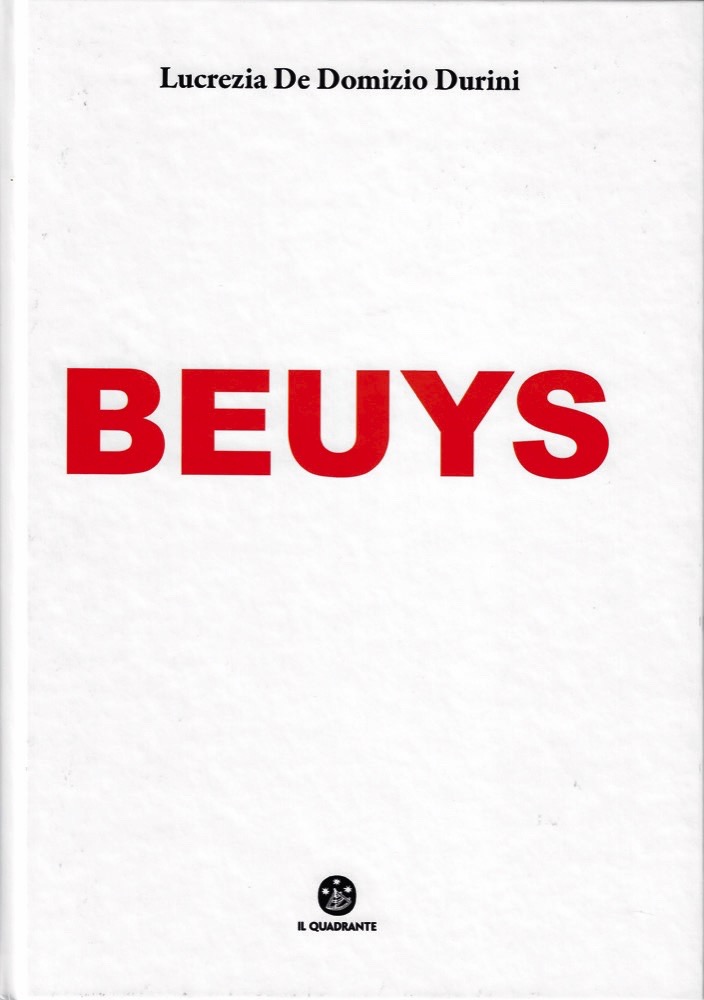Il termine «Beat Generation» l’ha coniato Jack Kerouac alla fine degli anni Quaranta. La parola «beat» ha diversi significati, è per esempio la prima parte della parola «beatitude»: “Non siamo dei bohèmiens, se ne ricordi. Beat vuol dire beatitudine, non battuto” dice Kerouac, citato da John Clellon Holmes nell’articolo «The Philosophy of the Beat Generation» (ESQUIRE vol. XLIX n. 2/291, febbraio 1958), e «Beatitude» è il titolo di una rivista beat nata nel 1959. Ma «beaten» vuol dire anche abbattuto, scoraggiato, alla deriva. «Beat» è anche battito, ritmo: poesia e musica.
I «beats», o «beatniks» come verranno chiamati alla fine degli anni Cinquanta coniugando le parole «beat» e «sputnik», rinunciano al progetto di una vita dedita alla famiglia, alla produzione e al consumo, rifiutano il lavoro gli orari la fissa dimora, vivono da soli o in gruppo in qualche topaia metropolitana ma conquistano per se stessi uno spazio nuovo: la vita è nella strada – on the road – solo da lì può venire ispirazione e bellezza. La musica è il jazz, che rompe l’armonia usata, il sesso di qualunque natura è essenziale e sacro, l’alcool e la droga servono ad aprire la coscienza e il buddismo zen sembra essere l’unica religione tollerabile perché rispettosa dell’individuo non riducibile a uomo massa.
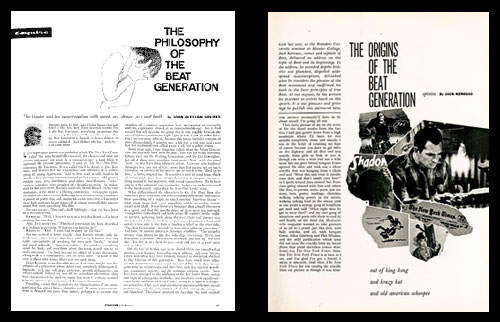
John Clellon Holmes, «The Philosophy of the Beat Generation» ESQUIRE n. 2/291, febbraio 1958
Jack Kerouac, «The Origins of the Beat Generation», PLAYBOY, n. 6, giugno 1959
| . |
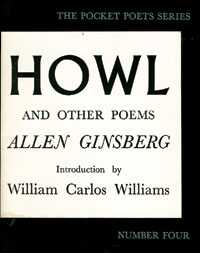
Allen Ginsberg, Howl, 1956
Prima edizione, riconoscibile per il titolo e il numero di collana stampati in azzurro
Se vogliamo trovare un’origine della poesia e dello stile beat, la troviamo nelle Foglie d’erba di Walt Whitman (Leaves of Grass, 1855) e nel jazz di Charlie Parker, Miles Davis, Dizzy Gillespie, Thelonious Monk, Dexter Gordon. Ma l’atto di nascita ufficiale è il 1952: Go, un racconto di John Clellon Holmes, considerato il primo racconto beat, e, dello stesso autore, l’articolo «This is the Beat Generation» (New York Times, novembre 1952), che segna l’avvio dell’esistenza pubblica del beat. Gli eventi fondamentali sono la pubblicazione di Howl di Allen Ginsberg nel 1956, subito sequestrato e condannato per oscenità, e il romanzo di Jack Kerouac, On the Road (1957) scritto nel 1951, a cui seguirono The Dharma Bums (1958) e le poesie di Mexico City Blues (1959). Lawrence Ferlinghetti, l’editore di Howl che aveva fondato la City Lights Books, pubblica A Coney Island of the Mind (1958). Da quel momento fiorirà una vasta produzione letteraria che sarà alla base del fenomeno hippie negli anni Sessanta.
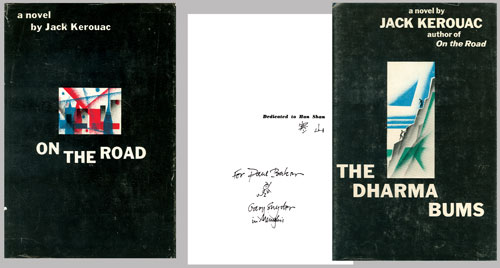
Jack Kerouac, On the Road, 1957 e The Dharma Bums, 1958; esemplare con dedica di Gary Snyder, il Japhy Ryider protagonista del romanzo
| . |
La mia collezione comprende libri e riviste in edizione originale e altre edizioni significative tra il 1944 e il 1965 per la gran parte. I libri pubblicati dopo il 1965 sono sempre edizioni originali di testi inediti come gli Indian Journals di Ginsberg o memorie del periodo raccontate dai protagonisti come Memoirs of a Beatnik di Diane Di Prima. Ho fissato come data di partenza il 1944 perché è l’anno in cui Kerouac e Burroughs, dopo aver conosciuto a New York Ginsberg e Hunke, scrissero a due mani And the Hippos were Boiled in their Tanks. La conclusione è il reading londinese alla Royal Albert Hall nel 1965 che, come ha scritto Fernanda Pivano, “introdusse in Europa la scena dei Figli dei Fiori, coi ragazzi che circolavano scalzi e in tunica bianca in un’aria greve di incensi e di marijuana mentre i poeti leggevano poesie contro la guerra in Vietnam“. Fu la conclusione di un’esperienza che fino a quel momento si era conservata, a volte tragicamente, su un piano individuale e diversificato nonostante la successiva spettacolarizzazione da parte dei media.
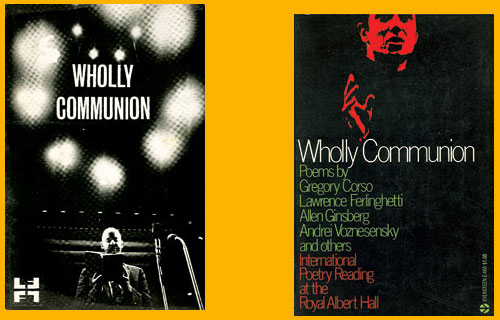
AA.VV., Wholly Communion, 1965: prima edizione inglese e prima edizione americana
E’ il documento del reading di poesia alla Royal Albet Hall di Londra dell’ 11 giugno 1965
| . |
Il reading londinese indicò una prospettiva completamente diversa: una massa di giovani (erano presenti 7000 persone) rivendicava il proprio diritto ad esprimere nuovi valori. Iniziava un’altra storia che voleva essere luminosa e felice. Molto difficilmente vi avrebbero trovato posto quei beatniks, alcuni ancora randagi, altri fagogitati dal sistema, in bilico tutti tra la bellezza e l’orrore di una loro scoperta beata umanità.
Ecco la famosa intervista del 1966 di Fernanda Pivano a Jack Kerouac:
E ancora Fernanda Pivano che ricorda quella intervista molti anni dopo:
BEAT GENERATION
The term «Beat Generation» was coined by Jack Kerouak at the end of the 1940s. The word «beat» has a variety of meanings: it is, for example, the first part of the word «beatitude». “We are not bohemians, remember. Beat means beatitude, not beat up” stated Kerouac, quoted by John Clellon Holmes in his article «Philosophy of the Beat Generation» (ESQUIRE vol. XLIX n. 2/291, february 1958), and «Beatitude» is the title of a beat magazine first published in 1959. «Beaten», however, carries a sense of being dejected, discouraged and adrift, while «beat» also means pulsation and rhythm: poetry and music.
The «beats», or «beatnicks», as they came to be called at the end of 1950s, through a combination of the words «beat» and «sputnik», rejected the ideal of a quiet life devoted to family, prodution and consumption, rejected work and fixed abode. Living singly or communally in urban squalor they nonetheless gained a new space for themselves: life is “on the road”, only on the road you can find inspiration and beauty. The music of the moment was jazz which crushed the usual harmonies, all kind of sex was considered essenzial and sacred, alcohol and drugs were useful to expand the mind, and Zen Buddhism seemed to be the only tolerable religion because of his respect for human individuality.
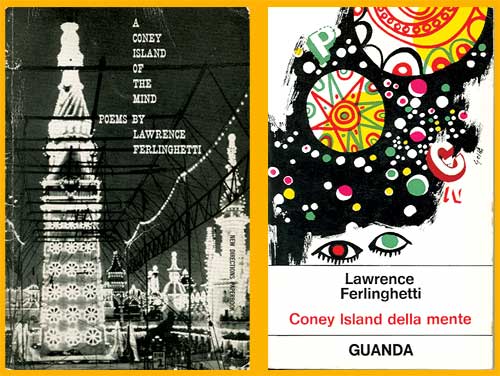
Lawrence Ferlinghetti, A Coney Island of the Mind
Prima edizione americana, 1958 e prima edizione italiana, 1968
| . |
If we want to find the origins of beat poetry and style, we sure find them in the Walt Whitman’s Leaves of Grass (1855) and in the jazz of Charlie Parker, Miles Davis, Dizzy Gillespie, Thelonious Monk, Dexter Gordon. But the official birth of the movement is 1952: Go, by John Clellon Holmes, considered the first beat novel, and, by the same author, the article «This is the Beat Generation» (New York Times, novembre 1952), which marks the launch of Beat’s public existence. The most important events were the publication in 1956 of Allen Ginsberg’s Howl, wich was immediately seized and condemned for obscenity, and the Jack Kerouac’s novel, On the Road (1957) written in 1951, followed by The Dharma Bums (1958) and his series of poems Mexico City Blues (1959). Lawrence Ferlinghetti,publisher of Howl and founder of City Lights Books, also brought out his own work A Coney Island of the Mind (1958). Tis point marks the burgeoning of a vast literary output which was to form the basis of the hippie movement in 1960s.
My collection includes original editions of books and magazines as well as other significant editions most date from between 1944 and 1965. The books published after 1965 are all original editions, for example the Ginsberg’s Indian Journals or recollections of the period recounted by its protagonists such as Diane Di Prima’s Memoirs of a Beatnik. I have established the chronolgical starting point as 1944 because this was the year in wich Kerouac and Burroughs, after the meeting in New York with Ginsberg and Hunke, co-wrote And the Hippos were Boiled in their Tanks.
The era’s concluding event was the poetry reading at the Royal Albert Hall in London in 1965. That was the evening which, as Fernanda Pivano wrote, “introduced the Flower Children scene to Europe, with young people in white tunics walking around barefoot, and the air heavy with incens and marijuana, while the poets read out poems against the Vietnam war“. This event marked the conclusion of an experience which had, up to this point, remained sometimes tragically on an individual and diversified level, even though the media subsequently turned it into spectacle.
The London reading signalled a completely change in perspective: here was a vast gathering of young people (the crowd numbered 7000) claiming yheir right to express new values. Another story was beginning, one wich aspired to light and happiness.The beatnicks would have had the greatest difficulty finding a foothold within the new movement; some were still vagabonds, others had been swallowed up by the system nad all were walking a narrow line between the beauty and the horror of the beatific humanity they had discovered.

